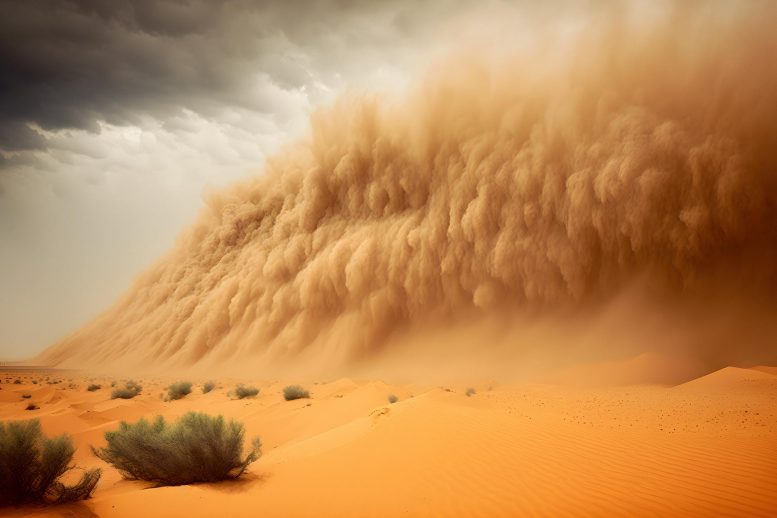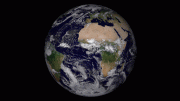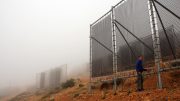
The Middle East and North Africa lose approximately $13 billion annually due to increasing sand and dust storms, which damage crops, infrastructure, and human and animal health. Hossein Hashemi, Associate Professor in Water Resource Engineering, and the Centre for Advanced Middle Eastern Studies at Lund University are researching the causes and trends of these storms, using artificial intelligence and remote sensing to monitor the situation. In addition to exploring correlations between war and land use, the team is examining the 3000-year-old qanat system, a sustainable water harvesting technique, as a potential solution to mitigate the effects of these storms and preserve biodiversity and food security.
Researchers are using artificial intelligence and a 3000-year-old water harvesting technique to combat the $13 billion annual loss caused by sand and dust storms in the Middle East and North Africa.
Sand and dust storms cause damage to crops, human and animal health, buildings and infrastructure, and force shutdowns for several weeks. There are natural sources of these storms, but also human-induced factors have added to the problem in the last decades.
Hossein Hashemi, Associate Professor in Water Resource Engineering, and the Centre for Advanced Middle Eastern Studies at Lund University, has been studying the causes and trends for several years.
His research provides further understanding of the challenges, but also some possible solutions:
“We must look at these issues from a multidisciplinary perspective, adding socio-political, economical, and management aspects to the technical and natural science-based facts. There is much to learn from traditional practices that are naturally adapted to the ecosystems and use sustainable methods,” says Hossein Hashemi.
Sand and dust storms are more frequent today
The highest density of dust sources in the Middle East is in Iraq between the Tigris and Euphrates rivers and along the Syria-Iraq border. This is the focus area for Hossein Hashemi´s current research which also includes neighboring Türkiye and Iran.
The natural sources of sand and dust storms are mainly deserts and dry lands. In the hot months in the summertime, the strong north-easterly winds carry large amounts of particles across the region.
However, these storms are becoming more frequent, they span over longer periods of time and spread to a wider area. Climate change is likely a driver, but also anthropogenic factors such as more abandoned agricultural land, water management upstream, migration to urban areas, and depopulation caused by conflicts and war.
“The environmental data from the area related to climate change and human activities are scarce and not sufficient for strong conclusions on this correlation,” says Hossein Hashemi.
However, Hossein Hashemi and his team monitor the development over time, using input from both remote sensing and advanced data modeling, allowing him to study various changes and time periods separately to define probable causes and effects.
“There is less water inflow to the lakes and marshlands in the Middle East due to factors such as dam constructions upstream and climate change. With the support of artificial intelligence and satellite data, we can define areas where we see that land is more susceptible to becoming new dust sources,” explains Hossein Hashemi.
The entire region is now mapped using artificial intelligence, and adding to the spatial analysis, the novelty of the project run by Hossein Hashemi and his team is that with temporal changes, they can dynamically show how dust sources vary over time.
“Next, we want to relate these dust sources to socio-political changes. We are looking into the relationship between land use changes and war in the region, especially in Iraq. How has the war affected the land use, and has these changes led to the transformation of lands into dust sources,” says Hossein Hashemi.
Correlations of dust sources and effects of war
The research team that brings perspectives from natural geography, sociology, and engineering, has recently published a study of the lakes in the area. Poor water management and drought periods have caused them to shrink and become potential dust sources.
Now, the team will look at a more detailed analysis of land use over the last twenty years and correlations with another map that shows the effects of war.
“We have data about how many people have been killed in some regions, which is also a cause for more abandoned land. We want to see the correlation with regards to land use with our dust source map and war map,” says Hossein Hashemi.
As more of the soil is turning into sand and water shortages are increasing, many villagers in Iraq have been forced to move into cities. The stress on land and people are challenges that can cause unrest and add to the already conflicted area.
Discoveries from the 3000-year-old qanat system
The next step is to look at possible solutions. Again, by using artificial intelligence to apply different management scenarios and see what could improve the situation or at least mitigate the effects.
There are agreements on water collaboration between the countries in the region, but they are not always followed. The old system of qanats has become interesting as a complement due to its resilience and sustainable way of harvesting water.
Nature-based solutions may increase local water supply
The qanat is a traditional water harvesting and conveyance system that is more than 3000 years old, originated in Persia. It consists of a network of underground channels that use gravity to bring groundwater from so-called aquifers up to the surface. These can span over many kilometers, and on the surface, the water can be carried further in an open channel and distributed for agricultural use or for drinking water.
“Nature-based solutions may increase local water supply. Using water harvesting systems, such as floodwater spreading and qanat, there could be less impact on environmental water and surface water supplies, such as lakes and marshlands. Studies have shown that dried areas of lakes, such as Urmia and Therthar, are primary sources of emerging dust storms in the Middle East,” says Hossein Hashemi.
Loss of water is a risk to biodiversity and food security
Modern water infrastructure and rural depopulation have reduced the use of qanats, and so some have dried up or are not well maintained. However, in some regions, communities still rely on them as the main source of water supply.
The water flow in a qanat is controlled by the level of the water table. It can not cause a significant drawdown of the underground aquifer, thus making it a sustainable way to harvest water. As the qanats are underground there is little loss of water to evaporation. The system also has advantages as it is less sensitive to variations from wet to dry years.
“Loss of water means loss of biodiversity and a loss of resources for food security. Lake Urmia, not far from the Tigris and Euphrates River basin, has now become a dust source. The depletion of natural resources causes risks for society. That is why we need to work with these matters from a multidisciplinary view, and the solutions need to take both human well-being and nature into consideration,” concludes Hossein Hashemi.
The project is funded by CMES for a 3-year period, 2021-2024.
The research team includes Amir Naghibi, Ali Mansourian, Sara Brogaard, Pengxiang Zhao, and Hossein Hashemi.








“There is less water inflow to the lakes and marshlands in the Middle East due to factors such as dam constructions upstream and climate change.”
Not to mention increasing human demand from an increasing population and changing agricultural practices.
The article states flatly, “Climate change is likely a driver,” but then follows up with the less assured, “The environmental data from the area related to climate change and human activities are scarce and not sufficient for strong conclusions on this correlation,”. In other words, the first quote is a poorly supported opinion and not a scientific conclusion.